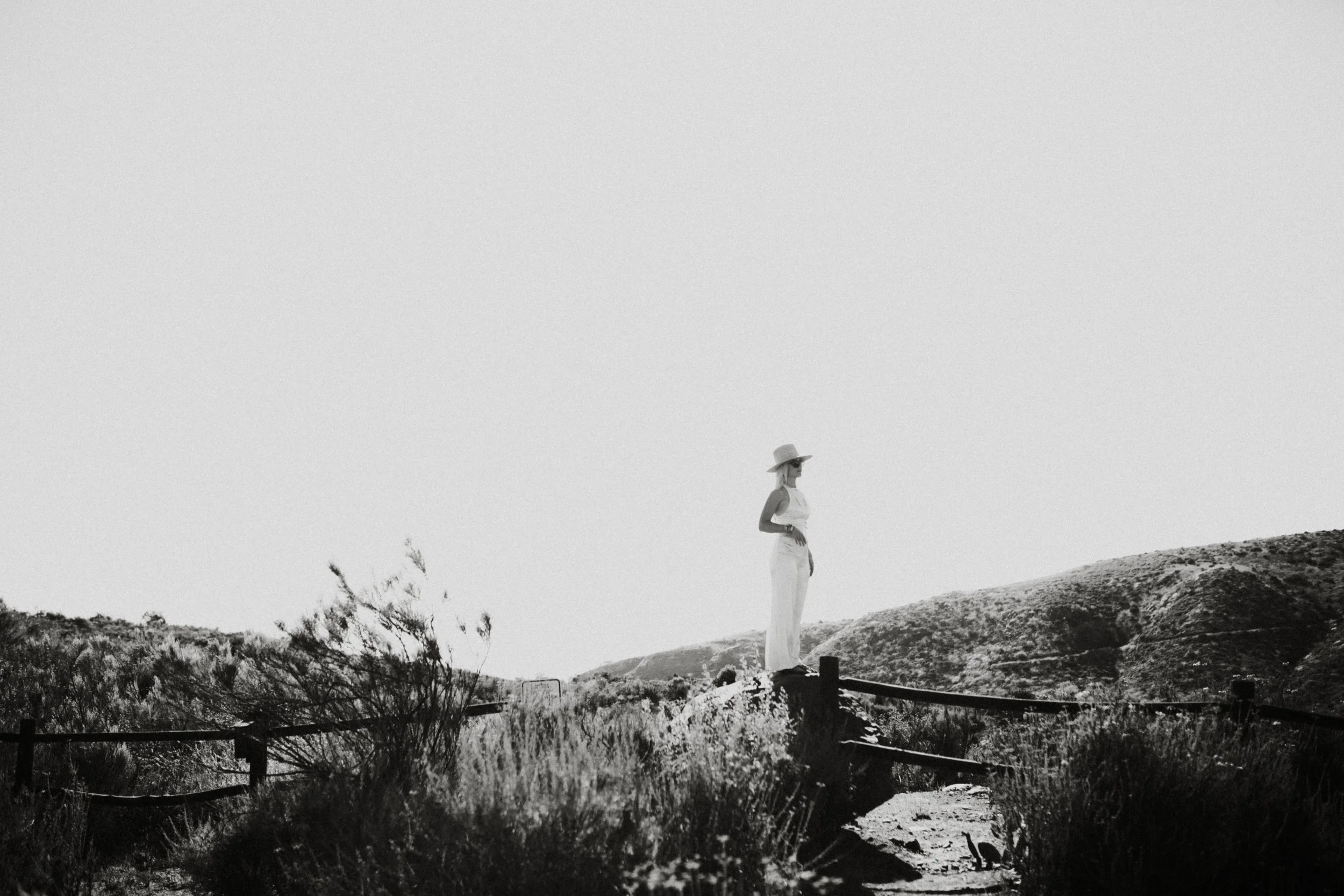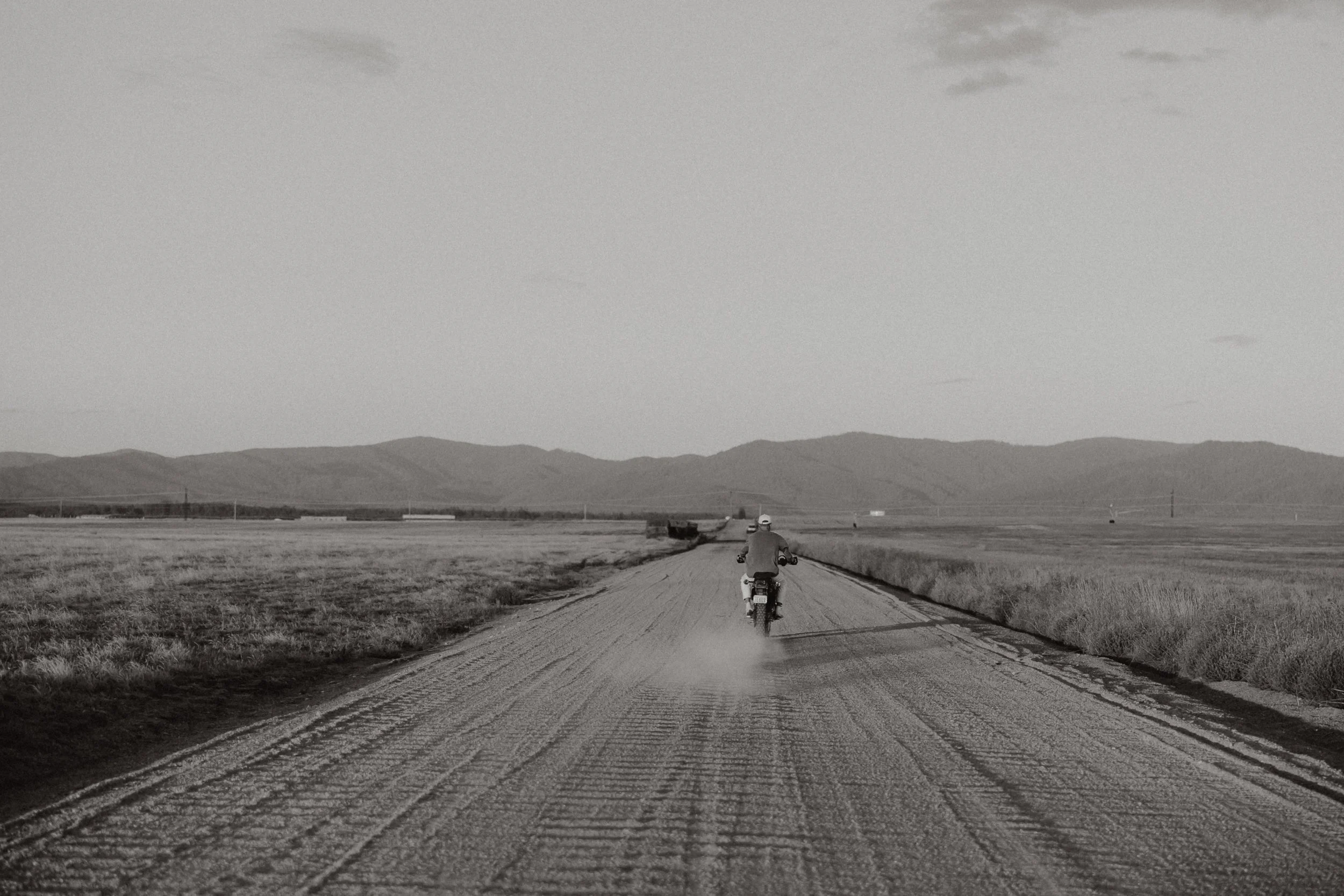Moving on From Longing: A Deeper Guide to Understanding, Healing, and Letting Go
Longing for someone — especially a past partner — can feel like a source of suffering you can’t quite shake.
Even when your mind knows the relationship is over, your heart can cling to a “what if” that feels impossible to release. Sometimes longing passes quickly. Other times, it lingers — years of replaying memories, wishing for one more conversation, for things to be different and imagining what could have been.
If you’ve ever wondered why letting go feels harder for you than it does for others, the answer usually runs deeper than the relationship itself. This kind of longing is rarely just about the person — it’s also about attachment patterns, family dynamics, and the way your nervous system learned to respond to love and loss.
Why Longing Feels So Strong
Attachment Shapes Our Response to Loss
The way we bonded (or struggled to bond) with caregivers sets the template for how we handle relationships as adults.
First, let’s review the basic attachment styles to better understand how they shape our sense of longing and connection.
Anxious attachment often makes us hyper-focus on reconnection and fear abandonment. If childhood love was inconsistent — warm one moment, withdrawn the next — we may find ourselves clinging harder, replaying the past, and struggling to trust that new love will come.
Avoidant attachment can lead to suppressing feelings until the absence becomes unbearable. This often stems from emotional neglect or a family culture that discouraged vulnerability. Longing here might look like busyness or detachment on the surface, but an ache underneath.
Secure attachment allows grief to move through — to be felt and integrated without it defining one’s worth.
Disorganized attachment combines both: craving closeness while also fearing it.
When early experiences taught your nervous system that love was inconsistent, losing someone can unconsciously register as life-threatening — even if you’re a capable, independent adult now.
Family Roles & Unmet Needs
If you grew up in a household marked by dysfunction or unpredictability, love may have been paired with caretaking, uncertainty, or emotional labor. That wiring makes longing feel oddly familiar, even when it hurts.
Children who over-functioned — who took on more responsibility than they should have — often feel magnetically drawn to relationships that recreate those dynamics. And even after a breakup, the pull doesn’t just vanish.
Emotional Scarcity
When love or attention felt scarce in childhood, the loss of a relationship can stir deep fears of abandonment. The longing becomes less about the person themselves and more about the comfort and safety they represented.
If you grew up with conditional love, rare affection, or minimized emotional needs, longing often becomes an old wound replaying itself — an attempt to finally “win” the kind of love that was never steady to begin with.
The Brain Makes Letting Go Physically Hard
Love lights up the same dopamine pathways as addictive substances. A breakup is, in many ways, withdrawal. And if your history associates love with high emotional stakes, the comedown is more intense and drawn-out.
The Story Keeps the Cycle Alive
Our minds crave closure. In its absence, they invent stories: “If only I had done this differently…” These imagined rewrites keep the person alive in your psyche, but rarely reflect the reality of the relationship.
The Path Forward
Letting go isn’t a single decision. It’s a layered process of rewiring old emotional habits, creating new meaning, and re-establishing safety in yourself.
Name What You’re Really Longing For
Ask Yourself:
Am I longing for this person, or for the way I felt when I was with them?
What old wound does this longing touch?
Often, what we’re really missing is belonging, validation, security, or excitement. Naming the core need is the first step toward meeting it in healthier ways.
Trace the Thread Back
Explore your family patterns:
How was love given or withheld?
Did you have to earn love through performance or caretaking?
Did you feel safe expressing needs, or did you learn to hide them?
This helps you see longing as a pattern you inherited — not proof that something’s wrong with you.
Break the Emotional-Addiction Loop (3 Tips)
Limit triggering contact (yes, including social media).
Interrupt rumination with movement, breath, or something sensory.
Replace the “hit” with other dopamine sources: creative projects, physical challenges, new environments.
Rewrite the Story
Balance nostalgia with truth. Write out the relationship as it really was — both the beautiful and the painful. Revisit it when your mind starts idealizing the past. Root in the truth by focusing on facts, not stories of “what was.”
Build Safety in the Present
Longing spikes when life feels uncertain. Create anchors such as:
A grounding daily rhythm
Emotional support (friends, seeking therapy, mentors)
Environments that bring sensory pleasure — look to things like nature, art + music to ground in.
Grieve Fully, Without Shame
Grief is not weakness. It’s how the body metabolizes truth. Let yourself feel the sadness, anger, or nostalgia without rushing to fix it. If you’re struggling to cope with difficult emotions and “feel your feelings” checkout my post on just that HERE.
Create a Future That Pulls You Forward
Healing gains momentum when what lies ahead excites you more than what’s behind. Travel, create, learn, build new connections — let your imagination stretch toward what’s next. Go toward people, places and things that bring you joy in the present to help you create a future that helps you to move forward.
Final Thought
Moving on isn’t about erasing the past or pretending it didn’t matter. It’s about understanding the deeper forces — family history, attachment style, brain chemistry — that make you hold on so tightly. It’s shifting your mind toward understanding that “it’s not about them; it’s about the deeper “core issues” that we experienced before they showed up.
When you heal the root, you’re not just letting go of one person. You’re loosening the grip of old patterns, reclaiming a part of yourself that’s been waiting — long before this relationship — to finally be free.
*Image by Photographer & Visual Artist Amy Lynn Bojornson.
Grieving A Never Life (The Life That Didn't Happen)
what is a never life?
A never life is the life that didn’t happen.
It’s the path that you didn’t go down. It’s the life that you once dreamed of having that, for whatever reason, never came to be. It’s what we thought, expected or hoped would happen, but didn’t.
A never life could be grief over the career we never explored, the relationship that didn’t work out, the city that we left unexplored, the kids we never had, the relationship with our parents that wasn’t & still isn’t….. it can show up in many different forms and it’s incredibly unique to us and our journey.
The kind of grieve and pain that “a never life” can activate can easily be overlooked by others because only we know the unseen desire we carry inwardly for what never was.
In her Dear Sugar column, Cheryl Strayed talks about the idea of a "sister life" (sometimes called "ghost ship" or "parallel life.”)
The basic idea of a sister life is this:
A "sister life" is the life you didn’t live — but could have lived — if you had made different choices, or if circumstances had been different. It’s the version of you that exists in theory, not in reality.
If you’re grieving a "never life," you’re experiencing one of the loneliest kinds of grief.
This is true because it’s invisible. There's no funeral, no white roses, no rituals, no casseroles dropped at your door or acknowledgement of the pain from the outside.
But inside, it's devastating. You and only you alone know the pain of a never life.
You are in a real grief process when mourning a never life.
It’s not about "getting over” it.
Rather that getting over it, coping and getting beyond the pain of a never life entails:
Letting yourself feel the layers of it, without trying to rush, avoid the pain of or minimize it.
It’s about eventually — slowly & gently — letting new seeds of life grow from a scorched earth of a dead dream.
Not to replace what you lost — nothing can — but to honor the fact that you are still here. You are still alive and because this is so, life must move forward in order for you to find happiness.
If you are in the mist of feeling the pain and loss of a never life; perhaps right now, it’s not about "moving on." Maybe right now, it’s about sitting with the black ash of what never happened and saying:
"This never life really mattered to me. This not happening for me hurts AND I will not let this define me. I will not allow this to be the climax of my story. I will not abandon myself here.”
The way out is moving toward acceptance
Ask yourself: what unborn dreams do I have that can still come to fruition? What dreams can still happen for me that would bring me joy, fulfillment, etc.? Maybe you say “none.'“ If so, okay; but work on allowing the space for new ones to emerge.
Remember that there are dreams that can still happen for you.
Here’s what’s important to remember and accept about the future:
It may look different than what you pictured. It may arrive slowly & unexpectedly. Your ability to experience what you desire — that part of you can be brought back to life; especially after it’s been numbed out by the pain of what didn’t happen; the pain of a never life.
I hope for these words to support you through your difficult feelings. Much love & resilience to you if you’re working through the pain of a never life. I’ve been there and sometimes revisit the pain of my never life as my actual reality continues to unfold. I notice that the pain more quickly passes when I allow the hard, painful feelings to be there rather than mask them and avoid them.
I think we all have things that we wish went differently; that’s human & real and it doesn’t need to define us.
I’ve learned that the only way beyond something hard; is through. In order to heal something you must face it and so is true with the pain that arises from a never life.
*Image by Photographer & Visual Artist Amy Lynn Bjornson
Below are some related resources for you:
When You Can't Move On (How to Begin to Move Forward & Heal)
Letting go of a certain someone, a dream unborn or the path we didn’t choose is a necessary step in order for us to fully move on to the next chapter.
Clearing any sort of unresolved emotions of the past, such as regret, and finding more resolve around what was or what could have been will help us be able to put our focus and energy toward what could be.
Finding peace around “what is” based on what happened in our past or what never had a chance to work out is what some of us have to figure out how to do in order to move forward. Quieting any regret and coming to a more neutral and accepting place around our past is what will help us to let go.
for some of us; this can feel like an impossible thing to do.
a reminder:
Letting go doesn’t mean that we need to like what happened; however, it does mean that we need to find a way to accept what happened.….eventually; in due time.
Letting go is something that we’ll have to do time and time again in this life. Of both little and big things. Letting go is a skill and it’s a skill that you can acquire.
It’s the skill that will, ultimately, help you move forward and move on.
Personally; I’m continually working on letting go. Learning how to do so has been one of my biggest lessons in this life thus far: how do i let go of him? what didn’t happen for me? the fear of what’s to come?
Can you relate?
The hard part in letting go is when we find ourselves struggling to accept a truth that can feel unbearable, a truth that’s unwanted, hard to swallow and presently indigestible.
how does one do that? how do you accept something that you can’t face?
the first thing we have to do is begin to start facing what feels so hard and go toward where there’s tons of resistance. (Yes, very hard to do, yet it’s the way out.)
We hear it all the time; go toward your fear; face your fear. Hard, yet true.
what do we do when we have no energy to make any move at all toward positive change because: it’s. just. too. hard?
I know in my darkest of days, while clinging to my past, any suggestion toward change or trying something different is met with major resistance. My resistance rejects change. Any helpful suggestions are shut down hard and fast. My stuck mindset creates a “no way out” situation, which leads to me feeling hopeless.
The longer I remain in my resistance and stuck mindset the bigger “the beast” gets. My resistance plays victim in believing that “nobody gets it,” and “nobody can relate.” All of these rigid and negative beliefs perpetuate my feelings of isolation and loneliness; and so it goes.
The cycle will keep going around and around like this if I don’t do anything to shift toward the light. So, how do I shift toward the light?
How does one put a stop to any cycle of mental madness? suffering? the pain of a self imposed prison?
Here’s what i know, which is sometimes a frustrating & hard truth:
I’m the one who needs to make the choice to change.
I’m the only one who can start moving toward a different perspective, practice different thoughts and make different decisions throughout my day. Nobody is going to do it for me. If I want a different feeling state; I have to pick different thoughts. Little by little, different thoughts will help to get my mind / body / soul back into a healthier space in order to do the positive actions that I need to do to get myself out of the dark.
Easier said than done; I know. Bare with me as we now discuss actionable steps to help you toward your light.
To begin this positive shift forward; we first have to address our ability to be vulnerable.
why vulnerability?
Our ability to be vulnerable, feel the discomfort and the pain and allow others that we trust and love to support us through to the other side is an important first step in reconnecting back to our source energy; our authenticity.
The point of this step toward vulnerability is to reconnect us back to a healthy support system. Whether that’s reconnecting with a past support system or reinventing a new one; connecting with good, healthy minded people is a foundational peace to start your new chapter. We all need a community of people to help us through in this life. As the story goes; “it takes a village;” nobody can do this (life) alone successfully.
*Don’t have that community yet? That’s okay; becoming more vulnerable will allow you to attract the “right” people to you. Allowing you to begin to build key relationships to help you expand and grow.
The way forward
How do we move forward when we don’t know how to accept our past?
How do we let go of the regret or pain we carry from painful events, missed opportunities and lost connections?
truth:
Until we find inner peace around what has already been written; we will feel & be unable to fully let go of what happened in the past; leaving us unable to move on. Working through and allowing ourselves to feel the grief of the buried pain and eliminating the rumination of what was or what didn’t happened for us is the self reflective & inner work that will release us from the past.
5 reasons why you can’t move on
1. Waiting for the Grass to Be Greener
You’re holding off on doing things that would be positive for you to do until you “feel better.” When we’re struggling with moving forward; we tend to struggle emotionally and mentally with factors such as low self worth, depressive symptoms, low energy, low mood, feelings of hopelessness and indecision. As we all know, it’s really challenging to do self serving things when we’re feeling so depleted of life energy. This keeps us in a negative loop of staying in our ground hogs day routine that perpetuates our stagnant reality.
2. Consistent & Loud Self Judgement
We all have an inner voice that’s talking to us all day long. The quality, tone and message of that voice is what’s determining the reality of our lives in so many respects. Having a fixed timeline around where we think we should be in life and should have done in our lives thus far can be keeping us majorly stuck and in anxiety.
It can take a lot of work (depending on where you’re from, where you live and what the messages of those around you are) to find peace around your current reality. It can be all too easy to get caught in the comparison game with the chronic available exposure of everybody’s life. (the scrolling of the highlight reel can really get to us.)
Simple point being that critical self judgement will strip us of joy.
3. Holding onto the Past via Rumination
One main reasons why we feel unable to let the past go is because we’re stuck in “trying to figure out why” what happened; happened.
It’s crazy making. We can spend countless hours running through situations, again and again, hoping for some kind of clue that will help us find “the answers.” This quest for a particular “answer“ leaves us more intangled in the past. It leaves us further engulfed in what was. Directing our energy to what was instead of what could be is how we remain severely stuck.
what is rumination?
Rumination is a repetitive thought process that involves dwelling on negative feelings, distress, and their causes and consequences. It’s a dangerous loop because often in life we will never be able to “figure out” why things have happened and occurred as they did because sometimes things just don’t make sense.
sometimes, actually often, there’s no particular answer; it just is what it is. This leaves the want to “figure it out” a never ending, unhealthy trap toward major pain and suffering.
Also, there’s often other people’s actions and synergy at play that we cannot decode. It’s not ours. We will never be able to enter the ethers of another’s mind in order to figure out why they chose to say, do or react how they did.
Hear me: when you stop trying to do this; you will find freedom.
Needless to say; rumination and overly thinking about a situation to death is a trap toward unhappiness.
4. Your Self Defeating Story
Oh, the narratives that we hold and tell ourselves on the daily. When I say "narrative,” I’m referring to our story (for worse or better) that we believe to be true about ourselves, the world or a situation.
5. Lacking Positive Belief in Something Bigger
Believing in something bigger and trusting that we’re being supported by something beyond us, helps us to be and remain hopeful.
When we don’t have something bigger for us to believe in, lessening our resistance toward change and, ultimately, letting go is hard to do.
How can we move forward if we don’t have hope?
5 ways to begin healing, move forward & let go
1. Create greener grass now In truth; the grass will get greener as we take the small steps toward doing things differently, now. As we’ve all heard, change is often slow and happens over time. Taking the pressure off of yourself to wait for the right moment when you “feel better” or have more energy might never come around until you take a positive step to give you that in which your waiting for.
The time is now; think about a small step toward different action that you can take today. It doesn’t matter how small it is; I just encourage you to do something different.
2. Work on eliminating self judgement through mindfulness practices, meditation and core personal work
Often, we have to look toward healthy and consistent wellness practices to bring into our lifestyle to get us back to a good rhythm. Just as we couldn’t be physically in shape if we never worked out and engaged in activities to allow our body to be fit; the same is true for our mental wellness muscles.
Find a wellness medium that works for you to engage consistently in and grow & learn from. It could be a podcast, book, deep breathing techniques, meditation, going to therapy, etc. Explore ways that you can work on functioning with less judgement of both yourself and others.
3. Address Your Negative Habit of Rumination
As mentioned above; our habit of rumination is keeping us stuck on the past. In order to move on; learning to redirect and guide your mind toward self serving thoughts rather than obsessing and highly focusing on thoughts that create distress, anxiety and fear is required.
Start with becoming more aware of when you ruminate. Bring in breathe work techniques such as box breathing to help calm your parasympathetic nervous system and help you achieve greater presence.
*If your over thinking and rumination is severe; it might be a good idea to get support from a licensed mental health professional. Find an article to support your search for the right therapist for you HERE.
4. Eliminate Unhealthy Narratives
Breaking down the narrative(s) that are keeping you stuck in the past and holding you in a purgatory state of life is essential toward moving on.
Combat your false stories of what you believe to be true with fact.
Allow yourself a way out of your self sabotaging stories and resistance by focusing on facts; not your negative false fearful stories or self fulfilling prophecies.
To shift, begin to engage with thoughts that allow you to have “a way out.” Pay attention to how your thoughts make you feel in your body / mind. When a thought feels bad, learn to pay attention and guide yourself to a better feeling thought. Do this practice with intention and awareness. Practice it daily and with time you will notice a difference in your overall feeling state.
5. Trust in Something Bigger Than You
Maybe “something bigger” for you is a religion, a spiritual belief system, the universe, a specific God. Whatever it may be; find something beyond you to ground in and believe in. Having positive belief and faith is a comforting & needed way of thinking in order to move forward. Especially when you’re stuck with no direction on how to proceed forward; hope is mandatory in order to take chances and remain healthy minded.
Also too; don’t forget about the concept of divine timing:
“Divine timing is the idea that everything happens at the right moment; even if it's not what you want or expect. It can manifest as a meaningful coincidence, gut feeling, or challenging obstacle. Divine timing can also be a way for the universe to look out for you, helping you avoid pitfalls or take advantage of opportunities.”
I hope that you feel supported and have some sort of idea for a way out of any unhealthy mindset that’s holding you back from moving on to more fulfilling times.
Looking for more?
*find a similar article on the topic of longing HERE
*Image by photographer Amy Lynn Bjornson.
Radical Acceptance (How to Move Forward after Loss)
how do you move forward after loss? The kind of loss that has cut you wide open and has left you without any hope. A loss that shakes you to your core and challenges your grit, strength and ability to overcome.
First off, I think that the devastation that certain losses bring have the potential to take us to a hopeless place within. Having feelings of hopelessness as apart of your grieving process vs. remaining in a hopeless place are two very different things.
Moving on from our past or past events that have been really difficult for us can be a struggle. Wonder if you don’t want to move forward? What if you can’t get yourself to move on from a situation that you either refuse to accept is done and over or has actually happened. Denial is a stage in the grief process. When something is emotionally difficult for us to process, denial acts as a defense until we can eventually accept the reality of any situation.
If you’re working through emotions around loss; in this post, I’m speaking to you my friend.
If I’ve learned anything at this point in life thus far:
it’s knowing that where there is resistance; there is some valuable insight to gain. Resistance often acts as a compass. It gives us direction toward what we might need to unlock, unblock or change in order to move forward.
Within the body the feeling of loss can present as a tightening in the chest. A heaviness that won’t give, a crook in the throat, a feeling of nausea in the heart, a hard blow to the stomach; loss is, generally, a really difficult emotion to cope with. For more on how to feel your feelings, specifically difficult emotions, find my post on that topic HERE.
how do you cope with the loss of someone or something? I’m referring to the loss of a person, a dream unmet, any sort of loss that you have standing before you that you are being called to move beyond, stomach or live with. Let’s touch base around some perspectives and truths to digest that can potentially help you to see some light.
loss of people (a break up or death)
Here are some of the comments that I’ve received from people in pain over loss:
“the love of my life has moved on and I can’t let them go.”
“I lost the most important thing to me; how do I go on?”
“but i’m “X” age and i have to face it’s not going to happen. It’s over for me”
“but they are gone”
Let me do my best to speak to the magnitude of these statements. First off, there’s no quick fix for any deep loss. I can’t possibility say anything that’s going to make the pain and discomfort of what is happening “go away.” Learning how to cope more healthfully with loss is the work I’m helping you to discover to do for yourself. I, nor anyone for that matter, do not possess the kind of power to “take away” what is only yours to work through, process and heal from.
However, a key healing element that you do have, is the power of choice. With choice, you get to decide how you are going to choose to perceive anything that is happening.
Working through significant loss is a dance of facing the most uncomfortable of truths mixed with catching yourself when you’re attaching to a perspective that holds no opportunity for you to move forward.
Let’s take the comment from above, “it’s over for me.” There’s truth that a certain relationship, person, career, stage of life or specific possibility might be over. It’s also true that something else exists on the other side of the pain and present time space reality that holds a different feeling state and reality for you if you allow yourself to heal, more forward and believe in a different possibility.
Call it hope, or the ability to believe something before you can see it. These are the ways of thinking that will serve you to spend some time thinking about as opposed to the extreme black & white thinking of “it’s done and there’s no point to move forward.”
Final conclusions about your life while you are still alive and living will limit you greatly and destroy your hope and ability to feel happiness.
As you are able to do so, the key in healing from loss is beginning to sit with the most uncomfortable truths of the loss; feeling it, breathing into it, working through the pain and discomfort that the reality or “story about” your situation brings up.
loss of a dream
I want to also speak to the loss of our life dreams. Sometimes there’s truth that certain things didn’t happen for us that we really wanted to happen. If this is true, we may need to grieve those unborn dreams. Some dreams do require us to grieve the loss of them in order for us to fully let them go.
2 types of dreams
unborn dreams that are still possible and have not happened for us yet.
unborn dreams where the window of opportunity has closed or is not possible.
Radical Acceptance: A Skill to Help you Move forward to “a life worth living”
There are four possible responses that we can have to any problem that we encounter.
Our 4 choices are;
1- solve the problem / make a change
2- change our emotional reaction to the situation
3- radically accept the situation
4- stay miserable
I don’t know about you, but number 4 is immediately out for me. I’m going to assume that true for you as well, being that you’re currently reading a wellness blog and more importantly because I want more for you; even if you’re willing to settle for “stay miserable,” I’m willing to hold higher expectation for you until you believe it for yourself.
For the purposes of this post, I’m going to focus on the option of choice #3, radical acceptance.
Radical Acceptance : Radically Accept the Situation
The term “radical acceptance” is a DBT (Dialectical Behavioral Therapy) concept and is a distress tolerance skill. Distress tolerance: Distress tolerance is a person's ability to manage actual or perceived emotional distress.
What is radical acceptance?
Radical acceptance entails finding acceptance without judgement for situations that are outside of our control, which in itself, reduces our suffering toward “what is.” Much of our suffering and struggle is often due to a lack of acceptance of our reality and our judgement about what is actually happening to us and in our lives. Radical acceptance invites us to detach from our feelings, which does not mean that we don’t allow ourselves to feel our feelings. What it does call for is for us to be able to experience and see our emotions for what they are, instead of overly connecting with them, which leads us to live in our pain.
As you can imagine, not attaching to our feelings can be really difficult to refrain from doing, especially when we’ve created a habit of doing so. Many people who struggle with depression have a habit of overly attaching to difficult feelings. This is not a fault; it’s a way of learned or habitual coping that doesn’t allow us to see the light and move on from our pains and hurts.
Over identifying with our emotions can keep us stuck in the past and in our pain.
Radical acceptance does not mean that you have to like or even agree with what has and what is happening in your life. Rather, it offers hope and the potential for a clear and unlimited future because it asks for you to accept things as they are, without judgement vs being stuck in non acceptance and fighting against reality.
3 steps toward further coping & healing
1. facing fear. Gaining the courage to face the reality of your situation and the feelings that it brings up by allowing your emotions to surface is how we begin to heal. We can’t heal something that we are avoiding to deal with. By looking the situation (and our feelings about it) in the face without trying to deny it or twist it into something it is not, we can find relief.
2. working toward acceptance. Working to accept the reality of your situation is what, ultimately, will set you free.
3. build positive events/experiences. Reengaging with life after loss by building new connections and experiences in present time is what will further help you to move on in a healthy way. After all, that’s what living life is, right? It’s a dance of ebb and flow; knowing when to hold on and when to let go. It’s allowing things to come in and out without our force and control.
Trust that the people & things that are for you will stay & what’s not for you will go as you rebuild.
2 types of experiences to focus on building:
Short term experiences – focus on things that are possible right now and can help you to feel better in this moment.
Long Term experiences – invest in things that give you a lasting sense of happiness and contentment ; experiences that contribute to building a life worth living.
summing it all up
The truth: we can change how we cope with hardship & struggle. No matter how much we feel stuck in our ways, with a desire for change; change is always possible.
when we accept what has happened, we then can work toward thriving in our lives no matter what the reality is or isn’t.
Some final thoughts for you.
Working through feelings of loss requires time and space. Be gentle with yourself as you are healing and working through difficult emotions. Give yourself grace and be mindful of getting caught up in timelines or rushed energy of when you think things need to be done and checked off.
Ultimately, work toward surrendering resistance toward what you cannot change.
I know, easier said than done. I hope my words have helped provide some perspective and ideas for you to carry with you toward moving through any loss you might be facing. Much love, from me to you, along your journey through it.
Recommended read for more on radical acceptance: book, “Radical Acceptance” by Psychologist Tara Brach
*Above Image by Photographer, Amy Lynn Bjornson.
How to Cope with the Feeling of Longing
What do you long for?
Is it a person, a place, a lifestyle, an adventure, a level of health……….?
How does longing show up within you? How does it feel?
Does it ache, hurt and cause frustration? Or does it inspire drive and excitement……?
Recently, I had a client reach out with a blog topic suggestion: “I’m curious to hear your thoughts on the subject of longing.”
Ironically, as life would have it, I’d spent the two hours prior to receiving this topic suggestion “trying” to connect with my next blog topic. After a continuous pattern of writing followed by deleting, I decided to close down my computer and remove myself from the task at hand since nothing was transpiring.
(*Life Reminder: Don’t try so hard, when you stop forcing is when the next step is often revealed.)
For me, when I write, or when I do most things for that matter, I need to feel connected and aligned with the topic or task I’m doing. You have my word that I’m never going to write just for content. My writing comes from somewhere deep within that has no agenda and I will not compromise that.
With that said, thank you to my client for this topic suggestion, for it resonates with me in so many ways and the timely suggestion reminds me to believe in the divine timing of it all. Cheers to that.
Now, lets get to the subject of longing. For me this single word is filled with powerful emotions and depth.
It’s a beautiful word. It’s an intense word.
Longing for something or someone is an involved and in-depth experience. It has deep roots and days of emotional gusto.
Whether you’re longing is coming from what you desire to create, a loss of love or what once was, an adventure you’re seeking or a relationship you’re yearning for, your experience of longing can work for you vs. against you. Longing is defined as “a yearning desire.” (I love that.) The intensity and level of emotional charge that a feeling or experience has often matches the level of self growth and change that can manifest from it. Within that space, where the feeling of longing lives, is where you can create some big shifts from within.
“Desire directs energy; and when you are clear about your desires, you are more precise in your creative aim.”
Our lives are constantly presenting us with situations and experiences that we get to filter in any way we choose. Longing can be a miserable and frustrating feeling if we become too focused on what we perceive is lacking. Meaning, getting caught in believing that what we long for is “not” showing up or, worse, ultimately, coming at all.
On the other hand, if we can harness our longing in the form of hopeful desire while keeping our focus toward the something which is on the way, we will allow ourselves to feel excited anticipation vs. discomfort. This presents two approaches to the same emotion, resulting in two very different paths. Believing that what you're seeking and longing for is on its way creates a very different energy than believing that you've missed "the" opportunity.
Also, for the record, you will miss opportunities in life. We all will because that’s apart of the life experience for all of us to some extent. However, if you do feel that you “missed” a significant opportunity, do your best to believe that another one is coming because it is. That is the true rhythm of life; If you miss one boat, another one is surely coming. It’s just the way it works and don’t forget it.
“You missed AN opportunity; not THE opportunity.”
The work lies within where we focus our mind when our sense of longing is triggered. Do we dwell in it? Ache about it? Avoid it? Get depressed about it? Or, do we walk toward it? Do we acknowledge our longing while staying true to our desire? Do we stay in belief that our desire is coming?
Q: What we desire also desire us, right? Wy would we have a desire that has grown from deep within if it weren't meant to transpire?
There’s also the piece to longing that I very much want to speak to, which is the part that can ache so painfully. The part that causes the kind of pain and hurt that you question if you can stomach. As much as I wish I can take away this intensity and level of pain that we can feel at times as humans, I simply can’t. What I can offer is to guide you toward putting attention in doing for yourself which you outwardly desire.
For example, if you desire love; give yourself love. If you yearn for respect; treat yourself respectfully. If you desire quiet; give yourself the space for a peaceful reflection and solitude. In the simplest of terms; give to yourself what you're longing for. There’s always a way to twist what you desire from the world and contort it into a form where you can give it back to yourself. As you do this, you simultaneously, open up the pathway to bring toward you what you want.
This is how you bring toward you what you desire in a super organic way.
Remember: What you give, you get back. Give out what you long for and it shall appear in some way, shape or form.
If you can become curious about your longing and believe that the intensity of it is here to teach you or direct you, that perspective can help you shift the energy around this potentially “tricky” feeling.
Be with your longing. Trust it. Tap into it and see what flows your way. Cheers friends.
For more perspectives & tips check out and feel free to SUBSCRIBE to my youtube channel. Also here’s two books that I recommend to encourage your self growth process. These books could be supportive as you work through your unique feelings around longing: The Untethered Soul & Letting Go.
* The above image was taken by Amy Lynn Bjornson, lifestyle & wedding Photographer.






























